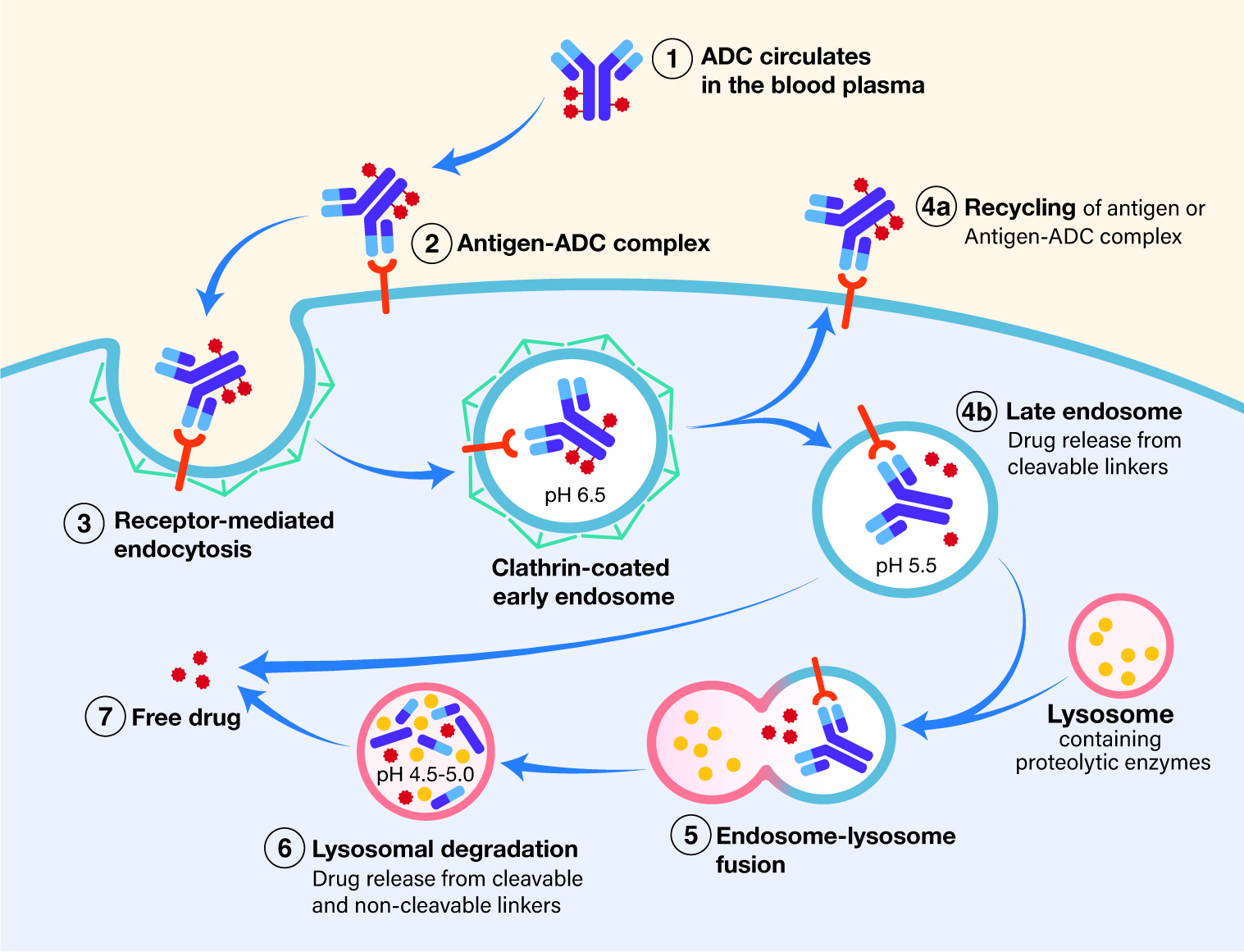| Product | Discovery | Pre-clinical Studies | Phase I Studies | Phase II Studies | Phase III Studies | BLA / MAA | Market |
|---|---|---|---|---|---|---|---|
| Trogarzo® IV Infusion | Discovery
|
Pre-clinical Studies
|
Phase I Studies
|
Phase II Studies
|
Phase III Studies
|
BLA / MAA
|
Market
|
Antibody-Drug Conjugates, ADCs
Over the past couple of decades, antibody–drug conjugates (ADCs) have revolutionized the field of biological therapy. ADCs utilize monoclonal antibodies (mAbs) to specifically target antigens and deliver a highly potent cytotoxic agent to the tumor cell (for cancer treatment). After the ADCs are internalized, the cytotoxic drug is released and kills the cell. By this approach, the drug has fewer side effects and gives a wider therapeutic window than traditional cytotoxic agents. Although ADC technology is well-established as a superior treatment for cancer, its potential use in HIV treatment remains largely unexplored.
ADCs consist of three essential components: a target-specific mAb conjugated to a potent cytotoxin via a stable linker. This tripartite structure of the ADC gives rise to a potent agent capable of delivering cytotoxins directly to target cells, bypassing the typical barriers that can cause intolerable side effects. The process begins with internalization by the target cells through receptor-mediated endocytosis, facilitating the subsequent release of the cytotoxin. The ADC approach to treat HIV is important because it can target the infected cells more selectively and efficiently than conventional antiretroviral drugs. Conventional antiretroviral drugs have to be taken daily and may cause side effects such as nausea, diarrhea, fatigue, and liver problems. They also have a risk of developing resistance in the virus, which reduces their effectiveness over time. The ADC approach can overcome these limitations by delivering the antiretroviral drug directly to the infected cells, reducing the systemic exposure and toxicity of the drug.

At TaiMed, we are fortunate to have a mAb asset with high binding specificity to CD4+ T cells, making it an ideal carrier for an antiretroviral drug payload. Our ADC will consist of a mAb with high binding specificity to CD4+ T cells and an antiretroviral drug payload. Once binding to the CD4+ T cells, the ADC is internalized, releasing the antiretroviral drug into the cells to disrupt the virus from multiplication. Our ADC approach not only can target deliver an antiretroviral drug payload directly into the CD4+ T cells, but also can prevent the virus from entering new cells by blocking the CD4 receptor, which is essential for HIV infection. Our ADC approach can potentially offer a long-lasting and durable treatment for HIV, with less frequent dosing and improved quality of life for patients.


